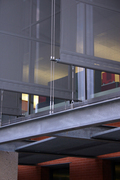what is GOOD daylighting?
good daylighting creates beautiful, appropriately lit spaces while saving energy. A successfully daylit building is the result of a combination of art and science, of architecture and engineering. It is the result of an integrated design process, and is not simply a technology that is installed once the building is complete.
don’t let myths obscure your view. Learn how successful daylighting works today. See ten daylighting myths—unclouded:
daylighting myths
about the daylighting collaborative
the Daylighting Collaborative was initiated by the energy center of Wisconsin and its sponsoring members as a source of why-do and how-to information for daylighting using windows.
vision
light every building using the sky.
mission
empower all building designers and owners to incorporate daylighting into every project by providing with them with a single source to locate all information they need: the Daylighting Collaborative advanced design that respects the natural environment and creates energizing spaces for people.
